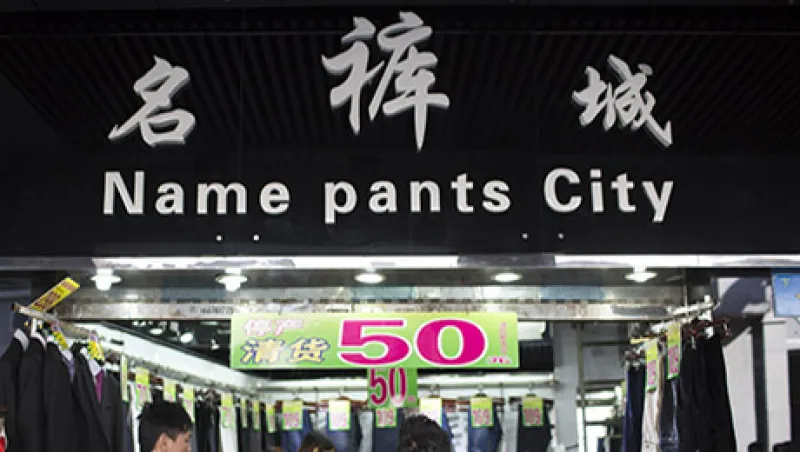For the past few years, one of the great global investment questions has been how to tap the Chinese economic boom. Fears over governance and a lack of transparency at listed Chinese companies have presented a conundrum, however. A common way to resolve that has been to buy into companies based throughout the Asia-Pacific region that have exposure to China.
That investment theme — buying into corporations that are based outside of China but in the country’s orbit of influence — remains valid, but its nature is changing dramatically. Experts warn that as the essence of the Chinese boom changes from a model based on high capital spending to one driven by high consumer spending, institutional investors making China plays will have to place their money in very different sectors.
During the past decade a disproportionate slice of China’s phenomenally rapid economic growth has come from steep investments in fixed assets. Both international investors and the Chinese government itself have realized that this is unsustainable. For example, “China consumed more cement in 2011 and 2012 than has the U.S. over the past hundred years,” says Ashley Davies, economist and strategist at Commerzbank in Singapore. “It’s very difficult to justify that much usage. This suggests strongly that overinvestment is taking place in China.” Like many economists, however, Davies believes that rising wages will keep China’s household consumption high, outpacing future growth in the country’s gross domestic product. He estimates that real-term consumption growth in China could be as high as 10 percent annually in coming years.
Asia-Pacific’s tourism industry, Davies says, will benefit greatly from high Chinese consumer spending. He refers in particular to the boom in gaming in various Asia-Pacific countries, including Singapore. But Davies also points to rising consumption in a much more literal sense. For starters, the Chinese middle class has grown increasingly fond of beef and dairy products imported from Australia and New Zealand. Several Australians have been stepping up to satisfy this newfound craving and supply cattle to the Chinese market have been several Australians, including Gina Rinehart, executive chairman of mining company Hancock Prospecting, and her fellow mining magnate Andrew Forrest. The pair have made fortunes supplying iron ore to China’s infrastructure-building boom; their turn to supplying food products neatly illustrates the changing opportunities the country presents.
Some investors see opportunities in the consumer electronics industries in China’s neighbors. Emil Wolter, portfolio manager of the €2.9 billion ($3.9 billion) Magellan emerging-markets fund at Paris-based asset management firm Comgest, says his fund has invested in MediaTek, a Taiwanese electronics manufacturer that has half the market in the chips used in the cheaper smartphones sold in China. At 498 Taiwan new dollars ($16.59), MediaTek shares are up 38 percent this year. Also quite popular in China are South Korean consumer electronics and cars, notes Commerzbank’s Davies.
Analysts note that in some ways South Korea sits in a sweet spot when it comes to the expansion of Chinese consumer demand because it meets two criteria. Many wealthier Chinese consumers are looking for trusted, high-quality foreign brands — a search intensified by recent scandals involving domestically made products. Second, Chinese consumers are sometimes reluctant to buy goods made in countries with which China has a troubled history, such as Japan. “There isn’t the same historical baggage between Korea and China as there is between Japan and China,” says Davies. He draws attention to the strikingly high ratio of South Korean to Japanese cars on Chinese roads.
But Genzo Kimura, Tokyo-based economist at Sumitomo Mitsui Trust Holdings, which with assets under management of $474 billion is Japan’s largest asset management firm, thinks Chinese consumers will buy a product if it’s sufficiently enticing — or if the Chinese alternative is sufficiently unenticing. Kimura cites the example of Japanese baby-product company Pigeon Corp: Responding to reports that domestic baby formula was contaminated, many Chinese mothers traveled to Japan to buy Pigeon’s baby formula. The company reacted by ramping up its business in China. At ¥5,900 ($57.51) its shares are up 28 percent on the year. Also expanding its Chinese footprint is Japanese retailer AEON Co., despite facing difficulty following demonstrations in China in 2012 in connection with the Sino-Japanese dispute over the Senkaku/Diaoyudao Islands, an uninhabited archipelago in the East China Sea to which both countries, as well as Taiwan, lay claim. AEON’s share price is currently down 11 percent on the year at ¥1,186, although the company plans to open more Chinese locations. This, Kimura says, is “a further indication of demand in the country for high-quality Japanese goods.”
Luxury Japanese brands popular among Japan’s elite are struggling to achieve the same status among China’s wealthy, a small but expanding part of the population. This has less to do with politics than with consumer psychology. “Shiseido, the Japanese cosmetics giant, is an example of a luxury brand in Japan that has not been able to benefit from the Chinese demand for luxury goods,” says Kimura. “There is still a strong preference for European brands when it comes to luxury.”
India’s Tata Motors has used its connections with European automakers to crack China’s luxury market. Its Jaguar Land Rover subsidiary makes more than half its operating profits in China, notes Comgest’s Wolter, whose Magellan fund has invested in Tata. Tata Motors is up 53 percent on the year at 454 rupees ($7.46). Given the growing economic power of Asian emerging markets, companies based in those economies are increasingly likely to buy into the Western brands that Chinese consumers love so much.
Get more on emerging markets.






